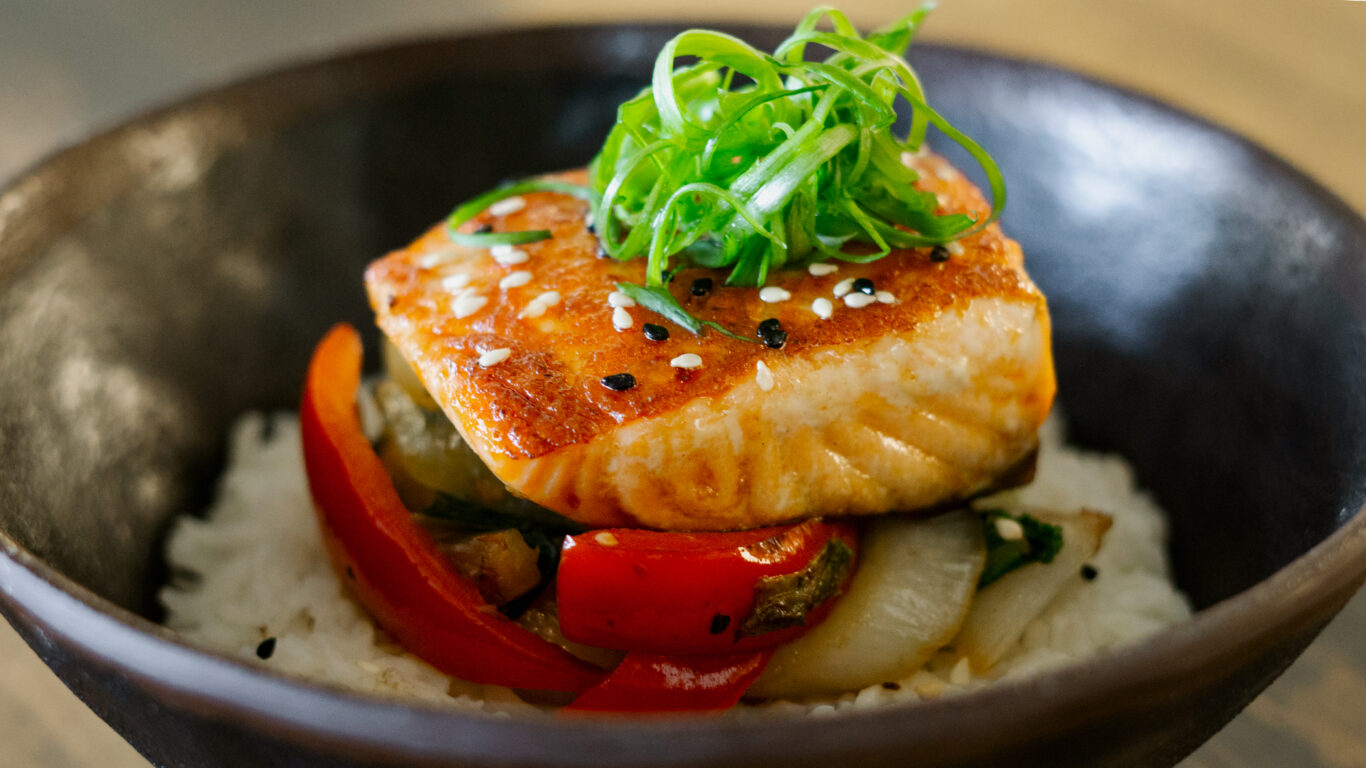Americans are big fans of seafood. According to the National Oceanic and Atmospheric Administration (NOAA), Americans ate over 6 billion pounds of seafood in 2019, and our country is second in the world for seafood consumption. But aside from how appetizing seafood is, many people don’t understand just how many health benefits there are!
For March, which is National Nutrition Month, we’re trying to improve understanding about the benefits of eating seafood and the importance of sustainable seafood sourcing. In addition to its bang-for-your-buck nutritional value, there are plenty of reasons to eat more seafood more often.
A Vast Sea of Health Benefits
If you aren’t sold on adding it to your regular diet, the health benefits may convince you to give it a try. Just two to three servings per week could make all the difference for your well-being!
Seafood is incredibly nutrient-dense and is a great way to add high-quality protein to your diet without all the fat of other animal proteins. Fish contains good fat, Omega-3 fatty acids. Our bodies can’t make them, so we have to consume them through our diets or through dietary supplements. Omega-3s are shown to enhance heart, brain, and nervous system health, and they’re certified Heart Healthy by the American Heart Association.
Beyond Omega-3s, seafood is packed with high quantities of other nutrients to better your health. You’ll find lots of Vitamin A, B2, B6, B12, and D in fish and other aquatic protein sources, plus other nutrients including Calcium, Selenium, Phosphorus, Iron, Zinc, Iodine, Magnesium, and Potassium. Altogether, the wide variety of nutrients can reduce the risk of heart attack and stroke.

Reduce Environmental Impact, One Burger at a Time
Here’s a not-so-fun fact: Estimates show that about a quarter of global emissions come from the food we eat. Of that, more than half comes from animal products. Luckily, of all animal protein products, both freshwater and saltwater fish have one of the lowest carbon footprints. The only animal meat with lower emissions is poultry meat, which includes all domesticated birds.
To the surprise of many, raising beef produces over eight times the emissions of fish. Certain seafood—including wild salmon, as well as farmed anchovies, sardines, mussels, and clams—have especially low emissions. For context, a single hamburger has the same carbon footprint as nine pounds of wild sardines, which is an enormous difference.
By choosing food with a lower carbon footprint, diners can positively impact the world alongside their health. From swapping out beef for seafood—or even plant-based options—we can all reduce our impact on the environment.

Get Creative With Seafood Recipes
Did you know that salmon is the most popular fish in the US, followed by tuna, and then tilapia? While these are well-loved options, there’s so much more variety available in the US. Here are some ideas for incorporating more seafood into your weekly diet:
- Take a classic tuna salad to the next level by toasting your bread, adding the tuna mixture, and topping it with a slice of your favorite cheese. Pop it in the oven until the cheese melts to transform your simple tuna salad into a yummy tuna melt.
- Looking for many of the same benefits without the animal protein? Seaweed is a great substitute that still contains Omega-3s and many of the same nutrients. Try adding it to a soup, including it in some ramen, or even add it to some zesty salsa. If you enjoy crunchy snacks, give crispy seaweed chips a try.
- Spice is the variety of life! If you want to keep it simple, you can add seasonings to enhance the flavor like lemon zest, pepper, chives, rosemary, or a premade seasoning mix.
Beyond variety for your palette, diversifying our seafood consumption has a positive impact on marine ecosystems as well. By tempering demand for specific aquatic animals, prioritizing sustainable fishing, and emphasizing sustainable seafood farming practices, we can help protect our oceans, seas, lakes, rivers, and other aquatic ecosystems.

Risks to Consider
While seafood can be incredibly beneficial to a person’s diet, there are a few considerations to keep in mind when adding it to your meals.
Say “Bye” to the Fry
Fried seafood—while delicious—is often high in saturated fats, which are shown to increase risk of stroke and heart disease. Often, a variety of sauces accompany a simple fried dish. Hidden ingredients in those sauces may have high sodium content and could negatively affect portion control. You don’t have to cut it out entirely, but be mindful about how much and how frequently you eat seafood fried and what you eat it with.
Manage Mercury With Moderation
Sea plants naturally absorb mercury from their environment, which small fish and shellfish then absorb when they eat those plants. When larger fish eat smaller fish, the mercury is passed on, and can end up in the food you eat.
That said, the nutritional benefits of fish and seafood greatly outweigh the risk of mercury exposure as long as high-mercury fish are eaten in moderation. Great options for low-mercury seafood include sea bass, clams, crab, trout, and light or white tuna like skipjack or albacore. Some higher-mercury seafood to eat in moderation include swordfish, shark, king mackerel, and tuna steak.
By using moderation and limiting the amount of large, predatory fish we consume, we can safely eat seafood without concerns about mercury.

“Water” You Waiting For?
Only about 15-30% of the US’s consumed seafood is sourced domestically, but one of the best ways to sustainably add it to your diet is by sourcing locally! We regularly work with local farmers, ranchers, and organizations to source ingredients near where our clients are located. Seafood is no different.
If you’re looking to add more seafood to your diet, research is your friend. Here are a few tips for getting started:
- Search online to see if there’s a community-supported fishery (CSF)—similar to a CSA farm share program, but for seafood—in your area, or a local seafood market.
- For farm-raised fish, keep an eye out for Aquaculture Stewardship Council Farm Fresh certification.
- For wild-caught seafood, look for the Marine Stewardship Council’s Wild Caught certification.
- The LocalCatch Network’s Seafood Finder tool is a great resource for finding local seafood companies…
- …as well as the Monterey Bay Aquarium Seafood Watch. They offer a variety of free consumer pocket guides that cover the US as a whole, guides to each US region, and guides specific to tuna, cod, and tilapia, which are some of the most popular seafoods consumed in the US.
By eating sustainable seafood more frequently, not only can we positively impact our own health, but we can make a positive impact on our planet. For more ideas on how you can integrate healthy seafood options into your menuing, reach out to us.
Interested in more insights?
Get first dibs on the scoop by signing up for our monthly newsletter!
We promise we email just like we cook—without spam.


